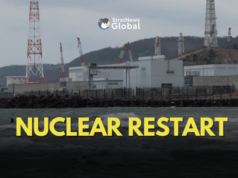President Donald Trump on Wednesday announced a 15% tariff on imports from South Korea, as part of a deal aimed at temporarily easing tensions with one of America’s top trading partners and key Asian allies.
The arrangement, announced shortly after Trump met with Korean officials at the White House, came during a blizzard of trade policy announcements ahead of a self-imposed August 1 deadline.
That is when Trump has promised higher tariffs will kick in on US imports from a range of countries. Imports from South Korea, a powerhouse exporter of computer chips, cars and steel, faced a 25% rate.
‘Crossed A Big Hurdle’
“I am pleased to announce that the United States of America has agreed to a Full and Complete Trade Deal with the Republic of Korea,” Trump wrote on Truth Social.
The negotiations were an early test for South Korean President Lee Jae Myung, who took office in June after a snap election. He said the deal had eliminated uncertainty in the export environment and set US tariffs lower than or at the same level as major competitors.
“We have crossed a big hurdle,” Lee said in a post on Facebook. Trump said Lee would visit the White House “within the next two weeks” for his first meeting with the US president.
Seoul’s Hefty Investment
Trump said South Korea had agreed to invest $350 billion in the United States in projects selected by Trump and to purchase $100 billion of liquefied natural gas and other energy products, the US president said. Both steps have been major priorities for Trump, a Republican, in other trade deals.
Of the $350 billion investment fund, $150 billion was aimed at a shipbuilding partnership while $200 billion would include funds for chips, nuclear power, batteries, and biologics, Kim Yong-beom, policy chief from the South Korean presidential office, told a briefing.
Kim said some existing investment plans by South Korean companies would be part of the fund, and that they had ensured there would be safeguards over how the funds were used.
Reuters has not seen the text of the deal or analyzed its terms.
It was not immediately clear how the investment deals would be structured, where the financing would come from, over what time frame they would be implemented and to what extent their terms would be binding on the parties involved. Trump said additional South Korean investments would be announced later.
Trump also said South Korea would accept American products, including cars, trucks and agriculture into its markets and impose no import duties on them.
US Commerce Secretary Howard Lutnick said on X that the South Korean energy purchases would take place “over the next 3.5 years”.
No Access To Rice, Beef Markets
The US tariff rate on South Korean autos would be set at 15% and their semiconductor and pharmaceutical exports would not be treated more harshly than those from other countries, he added. Steel, aluminum, and copper were not covered by the new deal and US tariff rates on those goods would remain unchanged.
Despite claims by Trump and US officials that non-tariff barriers on agriculture would be eliminated, Kim said that South Korea’s rice and beef markets would not be open.
South Korean Finance Minister Koo Yun-cheol, Industry Minister Kim Jung-kwan and Minister for Trade Yeo Han-koo had been in Washington for talks with senior US officials and were believed to have met with Trump shortly before the deal announcement.
Pressure had been mounting on South Korea since Japan clinched a deal to cut Trump’s threatened tariffs to 15% earlier this month.
Amid the last-minute push by government officials to reach a tariff deal, South Korea’s Samsung Electronics inked a $16.5 billion chip deal with Tesla.
South Korean battery maker LG Energy Solution also signed a $4.3 billion deal to supply Tesla with energy storage system batteries, a person familiar with the matter told Reuters.
(With inputs from Reuters)





